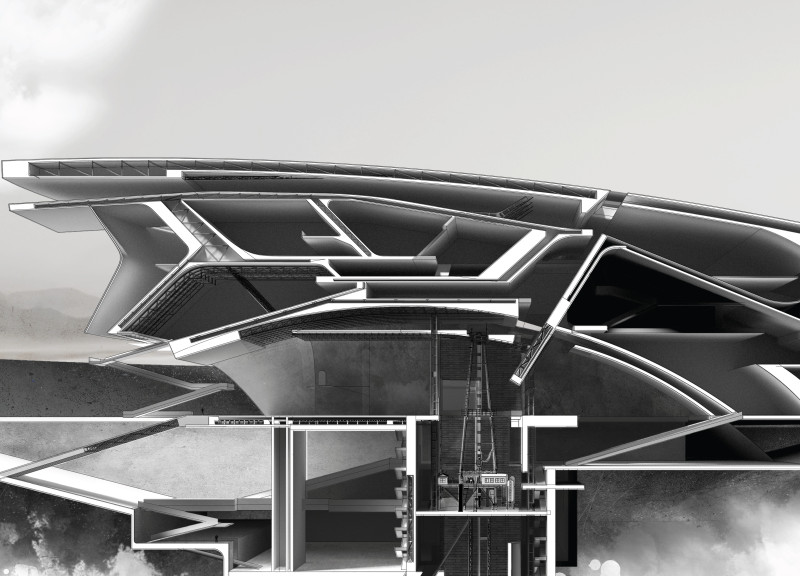5 key facts about this project
The overall concept represents a response to the specific climatic and cultural conditions of its geographical location, which plays a pivotal role in the design approach. The building’s orientation, for example, strategically maximizes natural light while minimizing heat gain, demonstrating a keen sensitivity to environmental factors. Additionally, the choice of materials reflects the local context, harmonizing the architecture with its surroundings. Elements such as glazed facades, textured concrete, and timber accents serve not only aesthetic purposes but also enhance the building's sustainability through passive heating and cooling strategies.
In analyzing the architectural details, one notes the seamless transition between indoor and outdoor spaces, which fosters a sense of openness and accessibility throughout the project. Carefully designed thresholds and circulation pathways allow for the fluid movement of people, further promoting community interaction. Landscaping plays a significant role in this project, with green roofs and integrated terraces that contribute to biodiversity and indoor air quality, aligning with contemporary trends in eco-friendly architectural practices.
The facade is another critical component of the project, showcasing intricate patterns that respond to the changing light throughout the day, creating a dynamic visual experience. This feature not only adds depth to the building's exterior but also engages the viewer's curiosity, inviting exploration of the different volumes and spaces within. The play of light and shadow across the surface adds an artistic layer to the architecture, further enhancing user experience.
The internal layout of the building is oriented towards flexibility, accommodating various functions that can evolve over time. Open floor plans allow for adaptability, enabling different configurations of furniture and spatial arrangements to suit diverse activities. This intentional design choice speaks to the growing need for multifunctionality in contemporary architecture. Moreover, private meeting rooms and collaborative workspaces are thoughtfully interspersed, ensuring that while the space remains open and inviting, there are still areas for focused work.
The use of innovative construction techniques highlights the project's commitment to modern architectural practices. By incorporating prefabricated elements, the project not only speeds up construction time but also ensures high-quality finishes and reduced waste. This method emphasizes efficiency and sustainability, aligning the project with current trends in responsible building practices.
Overall, this architecture project stands as a testament to the thoughtful integration of design, function, and sustainability. Its unique approach to materiality and spatial organization fosters a sense of community and provides a conducive environment for a plethora of activities. The project invites further exploration, encouraging readers and enthusiasts alike to delve into architectural plans, sections, and designs for a more profound understanding of its innovative ideas and the myriad ways it can shape interactions within the urban landscape. To appreciate the full breadth of this architectural endeavor, one is encouraged to review the detailed elements presented within the project documentation.























